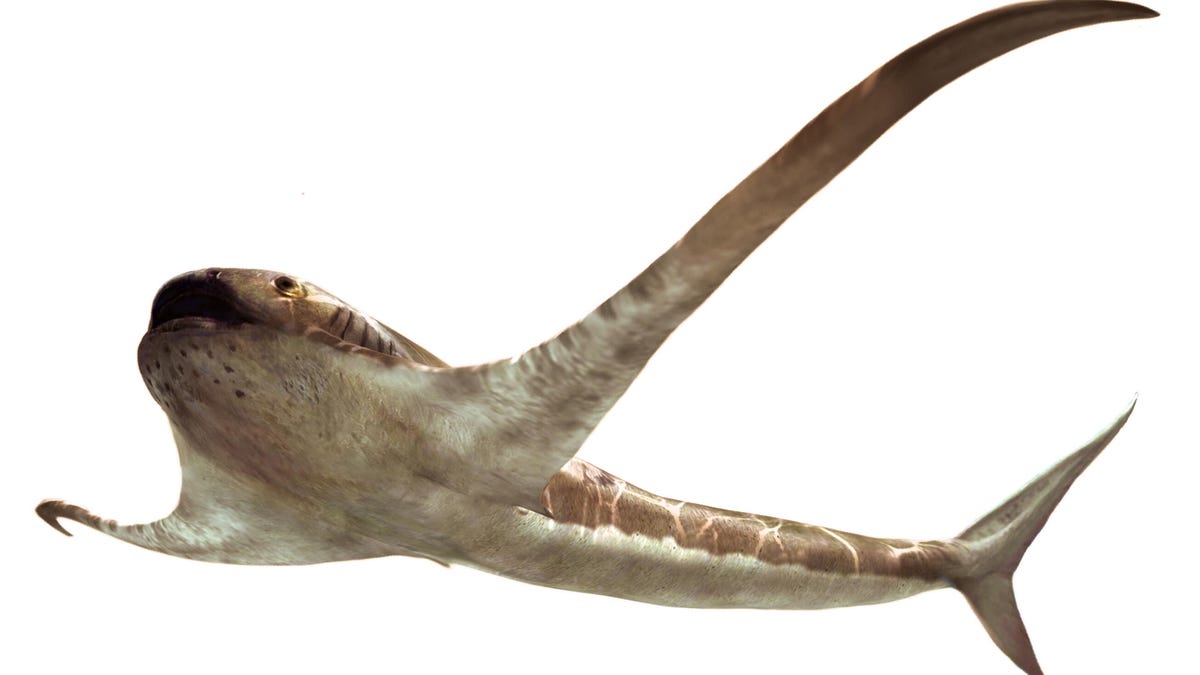Meet the 'bizarre' winged shark from the age of the dinosaurs
Called "Aquilolamna milarcae", this shark represented some early evolutionary experimentation.

2nd weirdest shark ever (behind the hammerhead shark, which has a hammer for a head).
When you think sharks, you think Jaws. A gigantic, terrifying monstrosity with row upon row of serrated teeth and cartilage for bones. But sharks aren't always terrifying, flesh-eating lords of the sea. Sometimes they're just flat out weird.
That's certainly the case with "Aquilolamna milarcae", a newly-discovered, plankton-chomping beast uncovered by Romain Vullo and colleagues from the Universite de Rennes. On Thursday, Vullo and colleagues published a report on the strange new ocean dweller in the journal Science, describing the creature from fossils recovered in Mexican marine deposits..
More than 66 million years ago, during the late Cretaceous period in the time of dinosaurs, Aquilolamna milarcae swam in the oceans, sucking down on plankton. So far so pedestrian, but one thing makes this shark stand out: Its shape. The Aquilolamna milarcae isn't a normal shark. It's a cool shark, bearing two gigantic winglike fins.
So far so strange, but this isn't just weird visually, it's weird from an evolutionary perspective.
In short, sharks -- even modern day sharks that chow down on plankton like the basking shark -- don't typically have fins like the Aquilolamna milarcae. Fins like that are mostly exclusive to fish like manta rays and devilfish. But, interestingly, the Aquilolamna milarcae shark's fins predate the evolutionary predecessors of those fish by 30 million years.
In that sense this "bizarre" shark is thought to be an evolutionary experiment of sorts -- perhaps a failed experiment -- and provides some evidence that fins seen in other fish like manta rays evolved independently, in a seperate branch of evolution from sharks.
Regardless, the Aquilolamna milarcae had plenty in common with manta rays. It swam lazily, and featured long pectoral fins and a mouth designed for filter feeding, much like basking and whale sharks today.

